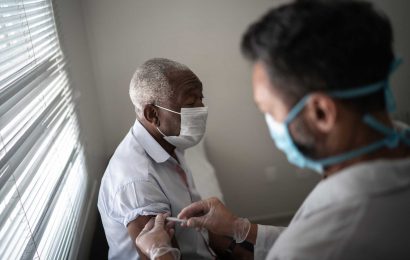Gross anatomy reveals three-dimensional shapes of pathology at a large scale. Histology, in contrast, reveals the microscopic anatomy of biological structures. But that magnification comes at a cost — histology shows only two-dimensional shapes because it studies small, flat slices of stained tissue.
This lack of three dimensions means histology can miss important pathophysiologies in the damaged lungs of patients with tuberculosis, or TB, and COVID-19, the two deadliest infectious diseases of humankind in recent years.
Now researchers report that a powerful imaging tool called microCT can be used to create a three-dimensional, or 3D, atlas of the spectrum of lung lesions in both tuberculosis and COVID-19, at near-microscopic levels. This gives unexpected insights into the unseen microarchitecture of the lesions within the context of the whole lung.
The research, published in the journal EMBO Molecular Medicine — with one of the 3D images featured on the journal cover, was led by Adrie Steyn, Ph.D., a professor in the Department of Microbiology at the University of Alabama at Birmingham and member of the Africa Health Research Institute, or AHRI, University of KwaZulu-Natal, in Durban, South Africa, along with UAB and AHRI researchers and colleagues at various South African institutions.
“To the best of our knowledge, this is the first study to use microCT to elucidate macro- and microscopic features of tuberculosis lesions such as cavitation, calcification and necrosis, as well as COVID-19 pathophysiology across large lung samples in three dimensions,” Steyn said. “A major new contribution of this study is the characterization of obliterated airways in TB and hemorrhage from ruptured blood vessels in COVID-19 lungs that would not be possible with conventional two-dimensional platforms. Further, microCT analysis of an entire COVID-19 lung lobe in 3D represents a technical advance that enabled us to contextualize vascular pathology within the greater lung architecture and visualize vascular micro-architecture in remarkable detail.”
One of the benefits of microCT is creating a 3D image of a lesion. In a tuberculosis paper last year, Steyn and colleagues showed that power. For 70 years, they said, clinicians thought TB granulomas in the lungs of patients were spherical or ovoid because conventional histology showed round features, and researchers intuitively assumed those meant the granulomas were spherical or ovoid. But such round images are similar to cutting a very thin slice through a thick tree branch and assuming the branch is round or oval.
Source: Read Full Article


